6-5 Evidence exists for water in locations besides Earth
For many, the primary motivation for studying planets is tied to the notion of wondering about the possibility of life existing there. As water is a key ingredient necessary for life to exist on a planet, much of current planetary research is actually a search for water. Because the presence of water today is not clearly evident on planets besides Earth, astronomers look to rocks on other planets for evidence of past water. We hinted at the beginning of this chapter that water is found as frozen ice hidden in the permanent shadows on the Moon and Mercury. On Venus we cannot look very far into the past, since the planet’s volcanic activity and flake tectonics have erased features more than about 500 million years old. On Mars, by contrast, we expect to find rocks that are billions of years old: The thin atmosphere causes very little erosion, there has been little recent volcanic activity to cover ancient rocks, and there is no subduction to drag old surface features back into the planet’s interior. (The heavy cratering of the southern highlands bears testament to the great age of much of the Martian surface.) In a quest to find these ancient rocks and learn about the early history of Mars, scientists have sent spacecraft to land on the red planet and explore it at close range.
160
Water May Have Once Existed on the Surface of Mars
As of 2013, seven spacecraft have successfully landed on the Martian surface. Landing in 2008, NASA’s Phoenix lander had no capability to move around on the surface, so it could only study objects within reach of the scoop at the end of a mechanical arm (Figure 6-20a). Four more recent unmanned, roving explorers—Mars Pathfinder (landed 1997), the two Mars Exploration Rovers (landed 2004), and the Mars Science Laboratory’s Curiosity rover (landed 2012)—were equipped with wheels that allowed travel over the surface (Figure 6-20b). Unlike stationary landers, these rovers did not have heavy and expensive rocket engines to lower them gently to the Martian surface. Instead, the spacecraft were surrounded by airbags like those used in automobiles or dropped with speed-slowing rockets and assisted parachutes. Had there been anyone to watch Mars Pathfinder or one of the Mars Exploration Rovers land, they would have seen an oversized beach ball hit the surface at 50 km/h (30 mi/h), then bounce for a kilometer before finally rolling to a stop. Unharmed by its wild ride, the rover then deflated its airbags and began to study the geology of Mars.
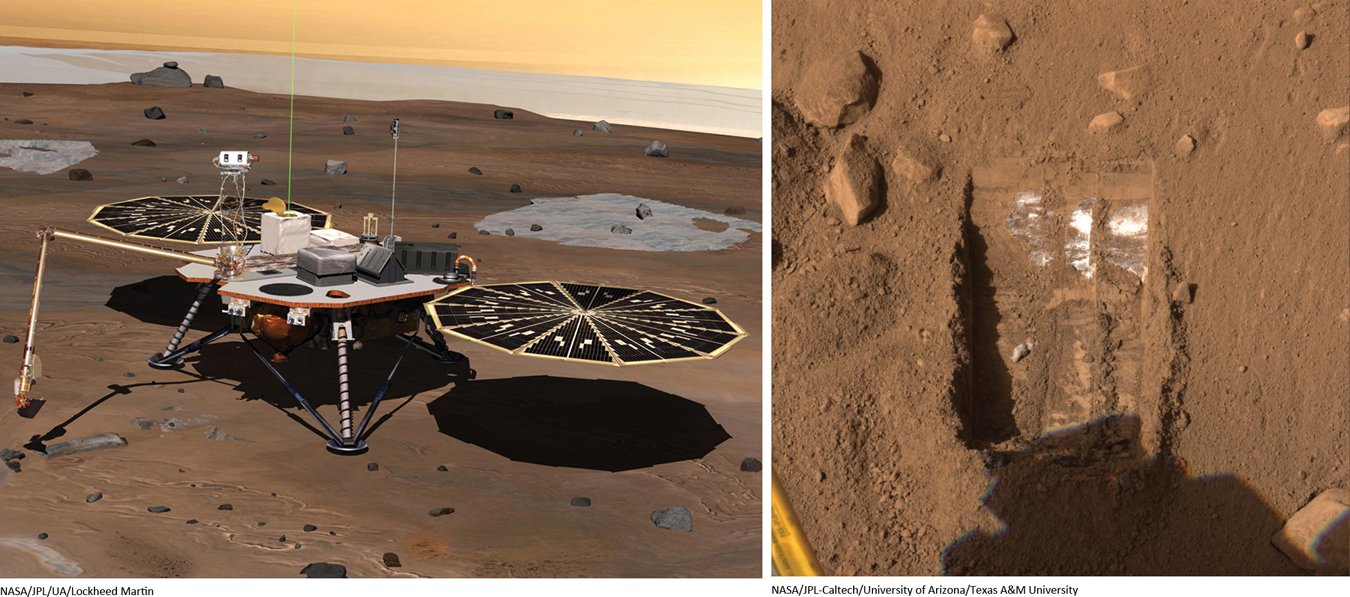
Figure 6-11 shows the landing sites of the Mars Pathfinder rover (named Sojourner) and the two Mars Exploration Rovers (named Spirit and Opportunity). Following directions from Earth, Sojourner spent three months exploring the rocks around its landing site. The Mars Exploration Rovers were also designed for a three-month lifetime, but Spirit functioned for more than seven years after landing and Opportunity is still functioning as of this writing in 2013. Over that time Opportunity has astonishingly traveled more than 20 mi (35 km) over the Martian surface.
161
Images made from Mars orbit show a number of features that suggest water flowed there in the past (Figure 6-21). To investigate these features, recent rovers have landed in areas that look much like flood plains found on Earth, albeit a much older and ancient flood plain. Figure 6-21b shows a portion of this plain. Rushing floodwaters can pick up and move rocks of fairly large sizes great distances from their original locations, so scientists expected that targeted landing sites (Figure 6-22) would be rich with numerous different kinds of rocks and show great geologic diversity. They have not been disappointed. Many of the rocks found appear to be rock produced by volcanoes. Other rocks, which resemble jagged rocks found in the ancient highlands of the Moon, appear to have come from areas that were struck by crater-forming impacts. Still others have a layered structure like sedimentary rocks on Earth. Such rocks typically form gradually at the bottom of bodies of water, suggesting that liquid water was stable in at least some regions of Mars for a substantial period of time in the past.
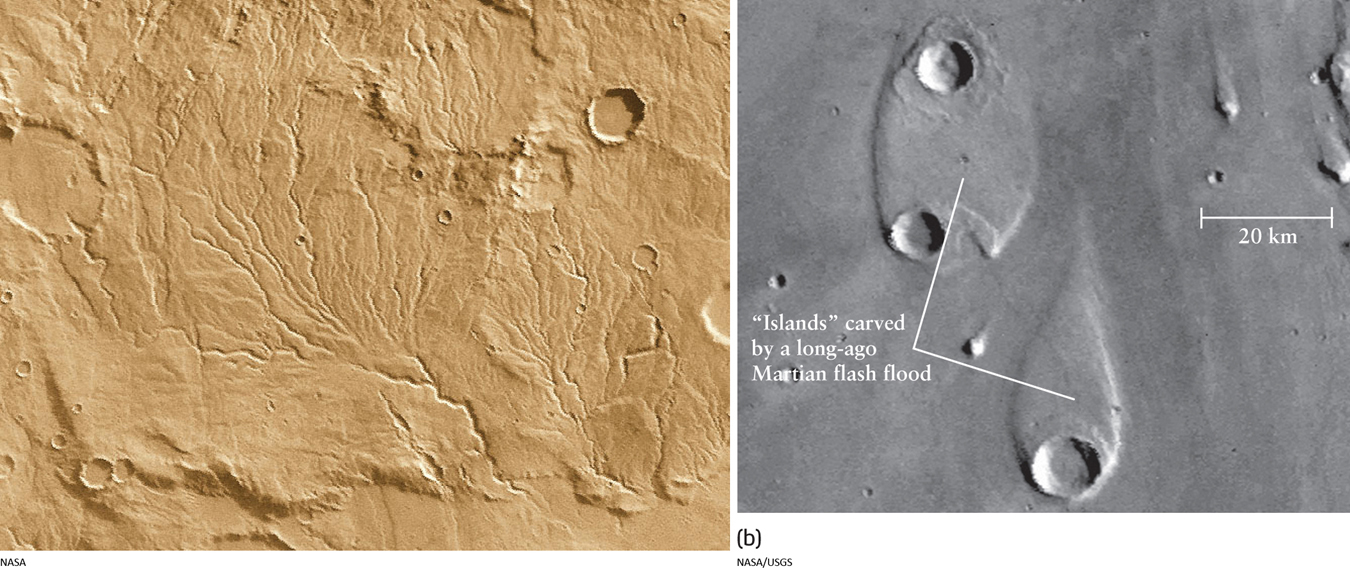
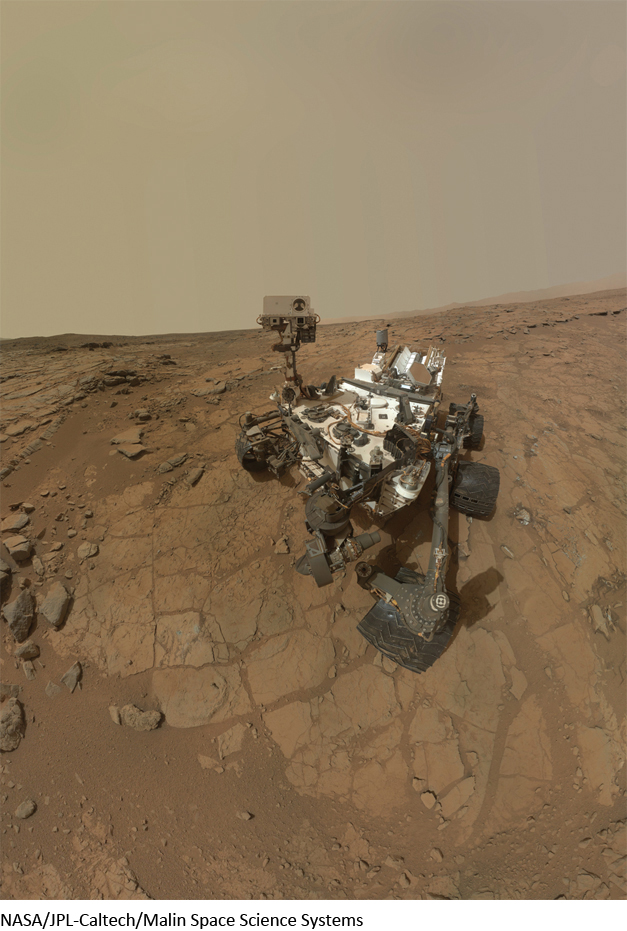
When combined with observations from Mars orbit, data from the rovers show that ancient Mars was a very diverse planet. Most of the planet was probably very dry, but there were isolated areas that had liquid water for a time. Astronomers still do not have a reliable mechanism that explains why liquid water appeared on Mars only in certain places and at certain times.
Whatever liquid water once coursed over parts of the Martian surface is presumably now frozen, either at the polar ice caps or beneath the planet’s surface. To check this idea, scientists used a device on board the Mars Odyssey orbiter to look for evidence of water beneath the surface. The results from the Mars Odyssey measurements suggest that there is abundant water beneath the surface at both Martian poles (Figure 6-23). But they also show a surprising amount of subsurface water in two regions near the equator (see Figure 6-11) and another region on the opposite side of the planet. One possible explanation is that about a million years ago, gravitational forces from other planets caused a temporary change in the tilt of Mars’s rotation axis. The ice caps were then exposed to more direct sunlight, causing some of the water to evaporate and eventually refreeze elsewhere on the planet.
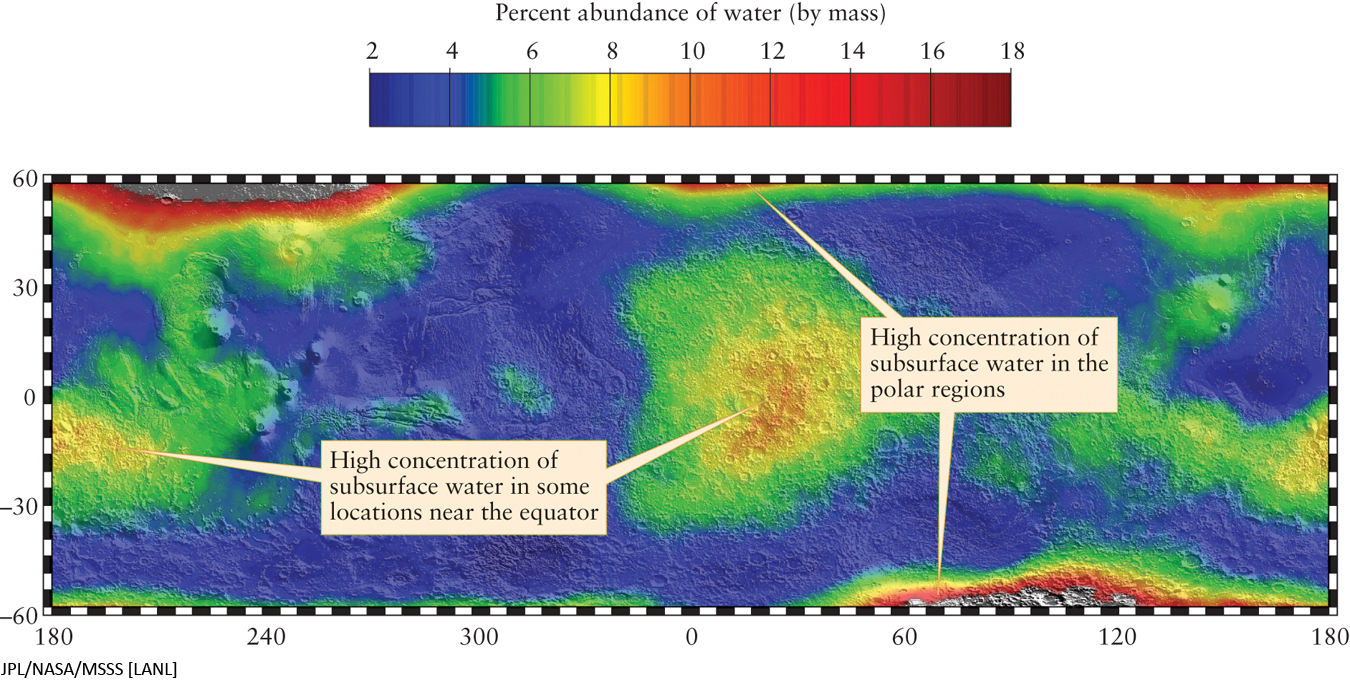
There are other surprising features on Mars related to the presence of water. A number of Mars Global Surveyor images show gullies apparently carved by water flowing down the walls of pits or craters (Figure 6-24). These could have formed when water trapped underground—where the pressure is greater and water can remain a liquid—seeped onto the surface. The gullies appear to be geologically young, so it is possible that even today some liquid water survives below the Martian surface.
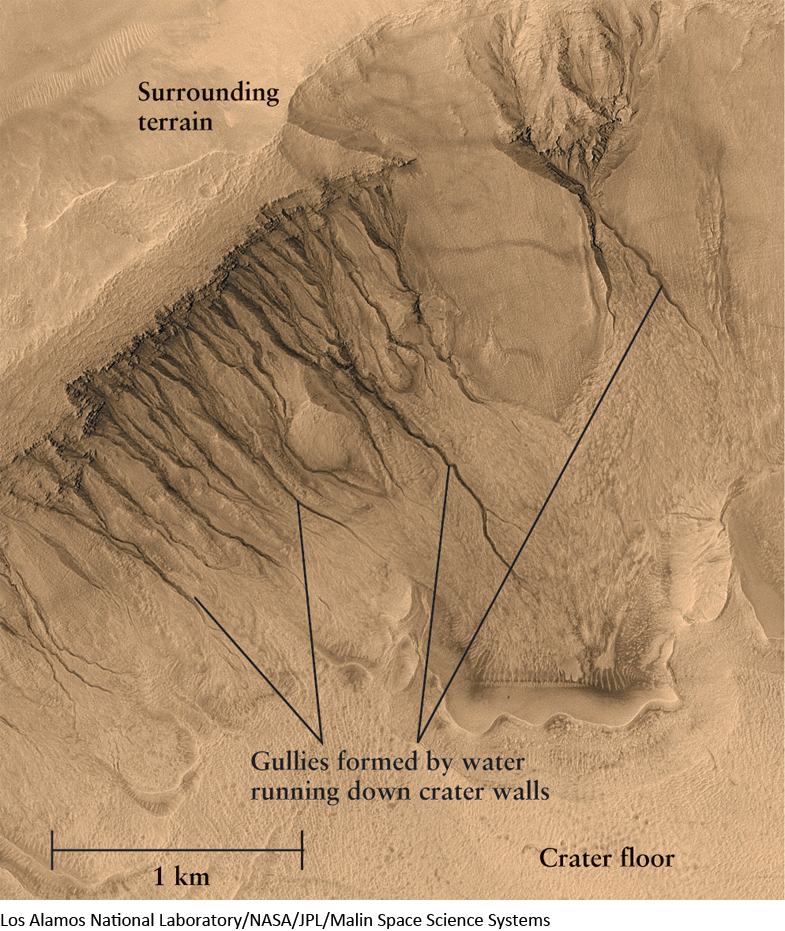
162
Alternatively, these gullies may have formed during periods when the Martian climate was colder than usual and the slopes of craters were covered with a layer of dust and snow. Melting snow on the underside of this layer could have carved out gullies, which were later exposed when the climate warmed and the snow evaporated.
Perhaps most exciting, the Phoenix lander drilled down into Martian soil to study the history of water on the Martian surface, with a special eye toward determining the potential that life might find Mars to be a habitable environment (see Figure 6-20). By digging trenches, it uncovered water ice that, when exposed to the Martian atmosphere, evaporated, disappearing over just a few days. Before it was covered with ice during the Martian winter, Phoenix was the first spacecraft to actually observe water, and even some falling snow, on Mars.
Question
ConceptCheck 6-13: Why does the presence of a wide diversity of rocks in a single location suggest the presence of water long ago?
Question
ConceptCheck 6-14: Why doesn’t sunlight evaporate all water on Mercury and the Moon?
Europa Could Harbor a Subsurface Ocean Beneath Its Icy Crust
 Go to Video 6-5
Go to Video 6-5
If water abundantly exists on Earth and clear evidence for water recently has appeared on Mars, where else in the solar system might we find water? The next most likely candidates for water are Jupiter’s largest moons.
Europa, the second of Jupiter’s moons, has the notable distinction of being the smoothest body in the solar system. There are no mountains and no surface features greater than a few hundred meters high (Figure 6-25). There are almost no craters, indicating a young surface that has been reprocessed by geologic activity. The dominant surface feature is a worldwide network of stripes and cracks (Figure 6-26). Like Io, Europa is an important exception to the general rule that a small world will be cratered and geologically dead.
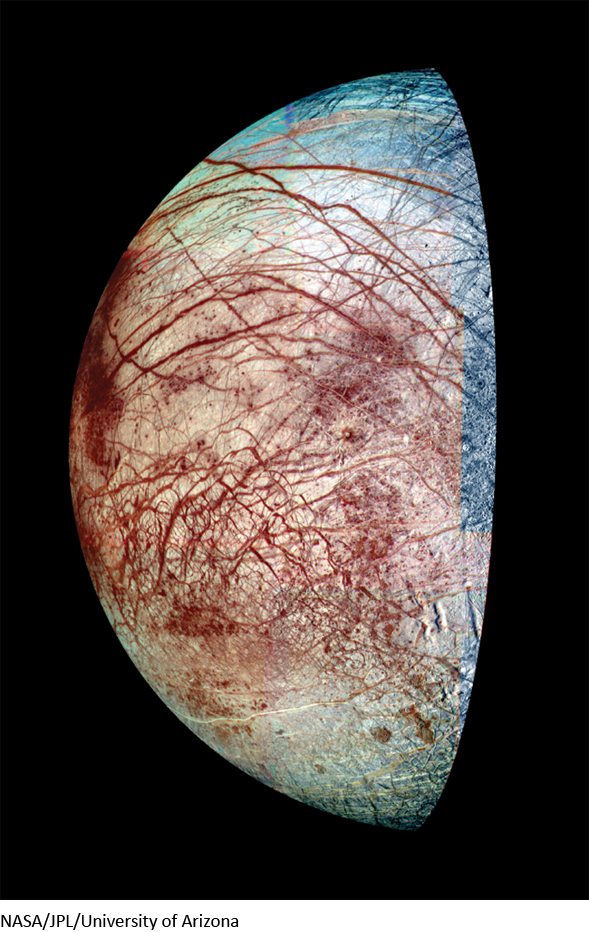
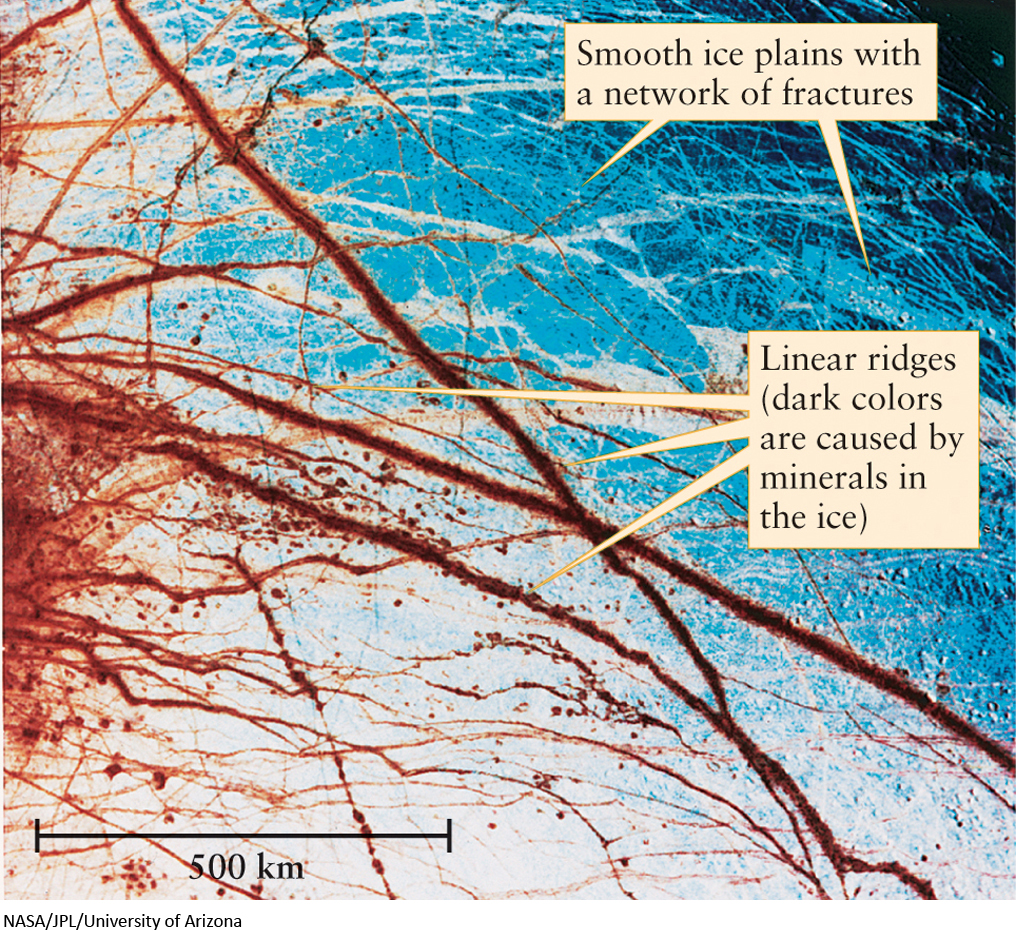
Confirming earlier speculations, the Galileo spacecraft (both Figure 6-25 and Figure 6-26 are Galileo images) showed that Europa’s infrared spectrum is a close match to that of a thin layer of fine-grained water ice frost on top of a surface of pure water ice. (The brown areas in Figure 6-25 show where the icy surface contains deposits of rocky material from meteoritic impacts, from Europa’s interior, or from a combination of these sources.)
163
The purity of Europa’s ice suggests that water is somehow brought upward from the moon’s interior to the surface, where it solidifies to make a fresh, smooth layer of ice. Indeed, some Galileo images show what appears to be lava flows on Europa’s surface, although the “lava” in this case is mostly ice. This idea helps to explain why Europa has very few craters (any old ones have simply been covered up) and why its surface is so smooth. Europa’s surface may thus represent a water-and-ice version of plate tectonics.
Although Europa’s surface is almost pure water ice, keep in mind that Europa is not merely a giant ice ball. The satellite’s density shows that rocky material makes up about 85% to 90% of Europa’s mass. Hence, only a small fraction of the mass, about 10% to 15%, is water ice. Because the surface is icy, we can conclude that the rocky material is found within Europa’s interior.
Europa is too small to have retained much of the internal heat that it had when it first formed. But there must be internal heat nonetheless to power the geologic processes that erase craters and bring fresh water to Europa’s surface. What keeps Europa’s interior warm? The most likely answer, just as for Io, is heating by being flexed and squeezed gravitationally during its orbit around Jupiter. The rhythmic gravitational tugs exerted by Io and Ganymede on Europa deform its orbit. But because it is farther from Jupiter, tidal effects on Europa are only about one-fourth as strong as those on Io, which may explain why no ongoing volcanic activity has yet been seen on Europa.
Some features on Europa’s surface, such as the fracture patterns shown in Figure 6-26, may be the direct result of the crust being stretched and compressed by tidal flexing. Figure 6-27 shows other features, such as networks of ridges and a young, very smooth circular area, that were probably caused by the internal heat that tidal flexing generates. The rich variety of terrain depicted in Figure 6-27, with stress ridges going in every direction, shows that Europa has a complex geologic history.
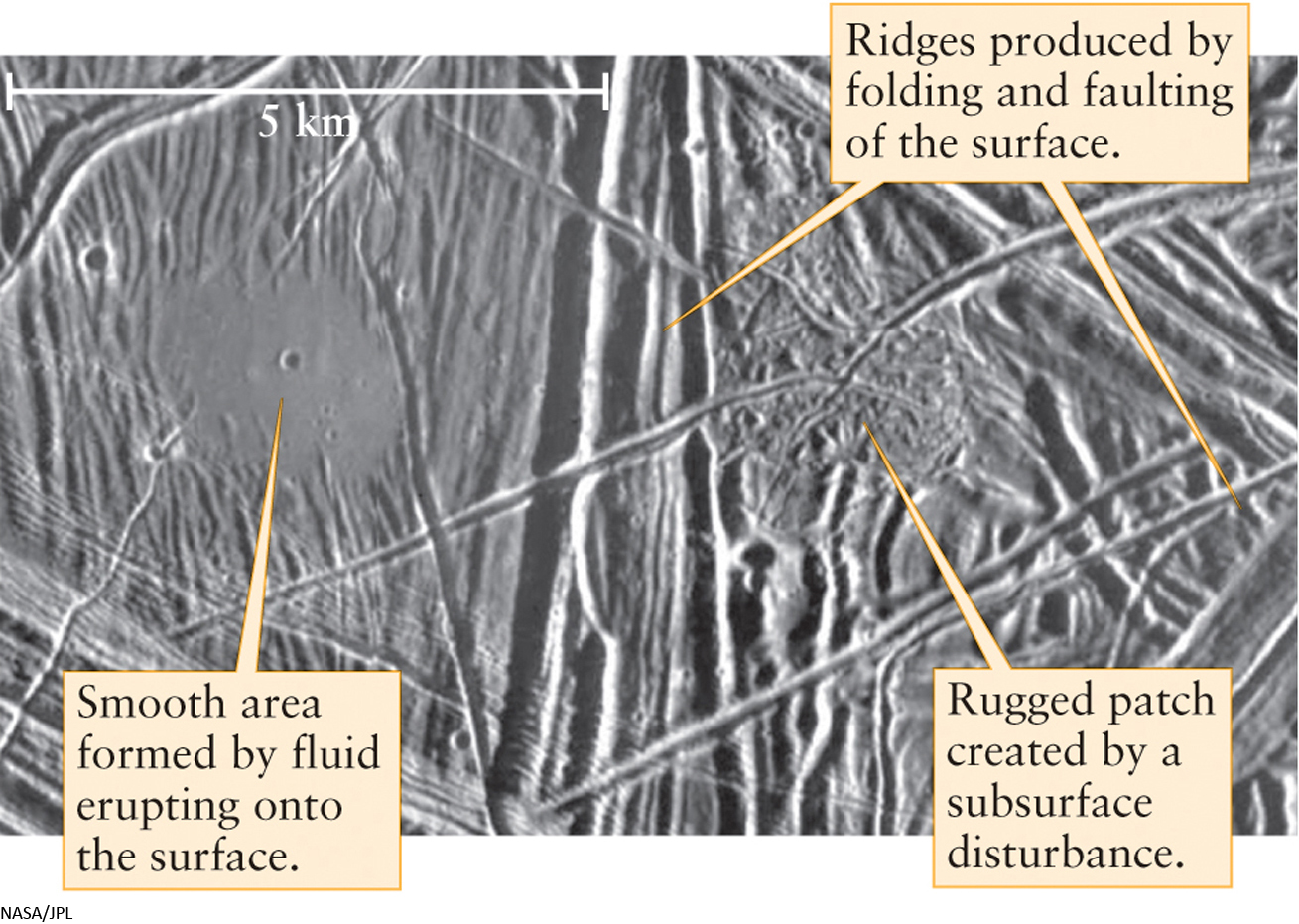
Orbiting Jupiter, Europa’s interior is kept heated by the continuous stress caused by its intense gravitational interaction with Jupiter.
Among the unique structures found on Europa’s surface are ice rafts. The area shown in Figure 6-28a was apparently subjected to folding, producing the same kind of linear features as those in Figure 6-27. But a later tectonic disturbance broke the surface into small chunks of crust a few miles across, which then “rafted” into new positions. A similar sort of rafting happens in Earth’s Arctic Ocean every spring, when the winter’s accumulation of surface ice breaks up into drifting ice floes (Figure 6-28b). The existence of such structures on Europa strongly suggests that there is a subsurface layer of liquid water or soft ice over which the ice rafts can slide with little resistance.
Question
ConceptCheck 6-15: Why do the long lines of ridges observed on Europa’s surface seem to be broken and fractured?
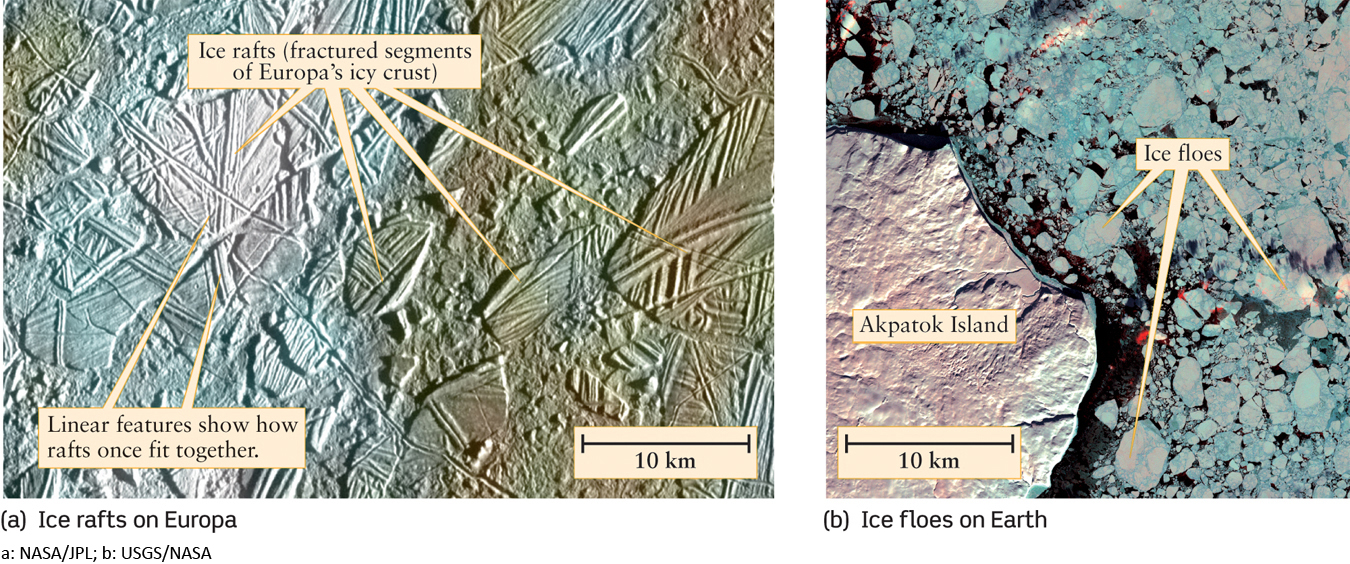
164
An Underground Ocean?
The ridges, faults, ice rafts, and other features strongly suggest that Europa has substantial amounts of internal heat. This heat could prevent water from freezing beneath Europa’s surface, creating a worldwide ocean beneath the crust. If this idea is correct, geologic processes on Europa may be an exotic version of those on Earth, with the roles of solid rock and molten magma being played by solid ice and liquid water.
A future spacecraft may use radar to penetrate Europa’s icy crust to search for definitive proof of liquid water beneath the surface. Scientists conclude that Europa’s outermost 60 mi to 120 mi (100 km to 200 km) are ice and water. (It is not clear how much of this is liquid and how much is solid.) Within this outer shell is a rocky mantle surrounding a metallic core some 400 mi (600 km) in radius.
The existence of a warm, subsurface ocean on Europa, if proved, would make Europa the only world in the solar system other than Earth on which there is liquid water. This would have dramatic implications. On Earth, water and warmth are essentials for the existence of life. Perhaps single-celled organisms have evolved in the water beneath Europa’s crust, where they would use dissolved minerals and organic compounds as food sources. In light of this possibility, NASA has taken steps to prevent biological contamination of Europa. At the end of the Galileo mission in 2003, the spacecraft (which may have carried traces of organisms from Earth) was sent to burn up in Jupiter’s atmosphere, rather than remaining in orbit where it might someday crash into Europa. An appropriately sterilized spacecraft may one day visit Europa and search for evidence of life within this exotic moon.
Question
ConceptCheck 6-16: If Europa has no molten core for an interior heat source, what provides the energy to keep water on Europa from being frozen completely solid?
165